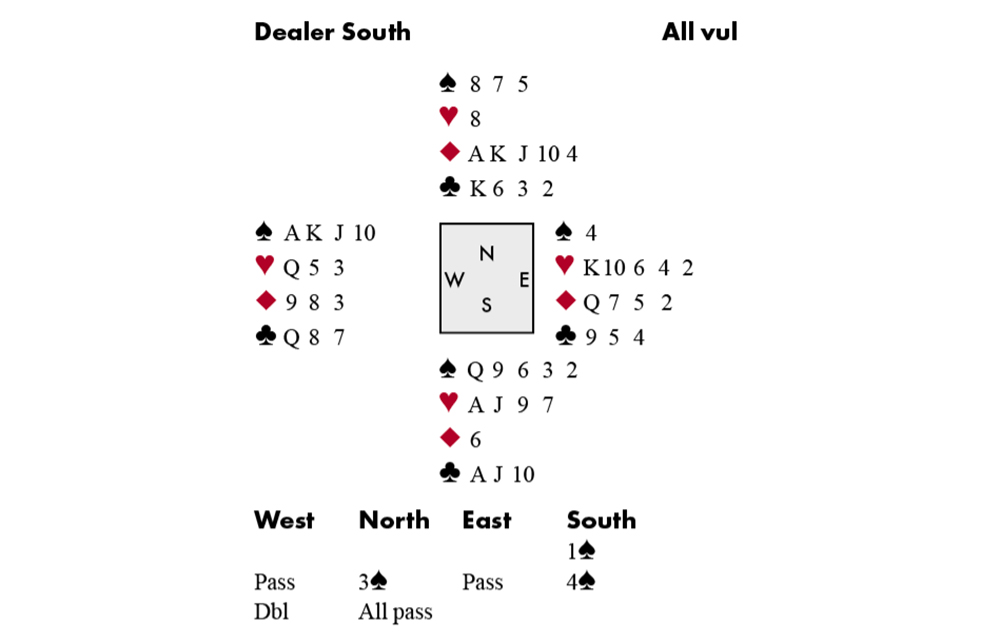If you watch world-class players online, you’ll notice how often they use the red penalty–card. Most of us are far too hesitant: we feel we pretty much have to guarantee a contract won’t make before we double. But as Zia Mahmood once said: ‘If every contract you double goes down, you’re not doubling enough.’
Very true. But he might have added that it does depend a bit on the person you’re doubling. Be cautious with players who seem to pull tricks out of hats, or who, as a result of your double, might find a brilliant alternative line – Zia himself, for instance. Another great player who should come with a warning sign is Gunnar Hallberg. He was at London’s rubber bridge club TGRs recently, and at one point, bid to 4♠. His left-hand opponent, James Vogl (who happens to be a world-class poker and backgammon player), had what looked like the safest double in the world (see diagram).
Playing 5-card Majors, North’s jump to 3♠ was invitational (it might have been better to bid 2◆ then jump to 4♠). Gunnar raised to game: he always accepts with 5431 distribution. James naturally pulled out the red card.
He led the ♠A, followed by a low heart to East’s ♥K and Gunnar’s ♥A. Gunnar, after some thought, decided to play James for 4333 distribution, and also for the ♣Q (without it, he felt, James might have switched to a club at Trick 2). Gunnar now played the ♣J, winning West’s ♣Q with dummy’s ♣K. He cashed the ◆AK, discarding a heart, and ruffed a diamond. Next he ruffed a heart, crossed back to the ♣A, ruffed another heart, and crossed back to the ♣10. He was down to ♠Q96; James to ♠KJ10. He exited with a low spade. James, on lead with ♠KJ, had no way of preventing Gunnar from making his ♠Q.







Comments
Join the debate for just £1 a month
Be part of the conversation with other Spectator readers by getting your first three months for £3.
UNLOCK ACCESS Just £1 a monthAlready a subscriber? Log in